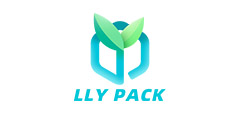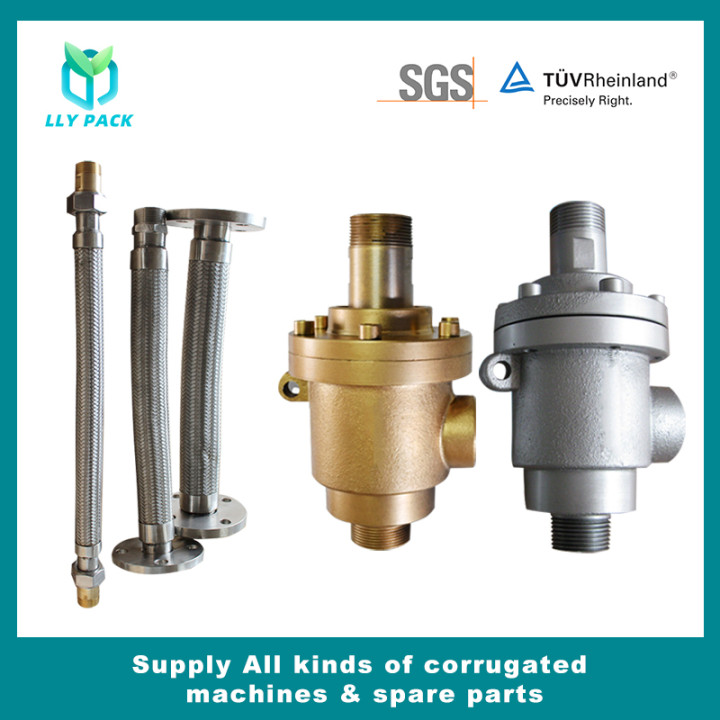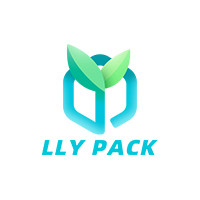Fourth, registration is better than flexo printing
The registration of F-type corrugations on Roland 900 is better than that on a single flexo printing press. At the same time, Roland 900 can print very tightly registered jobs due to the ease of circumferential, lateral and diagonal register adjustments at the PECOM press center. On the Roland 900, the use of ordinary rubber roller lining, standard liner, roller pressure of 0.2mm, printing short silk 缕F-type corrugated register situation. Selecting a thicker backing paper to increase the pressure shows more clearly that the compression results did not produce a register change. It can be seen that printed short silk corrugated cardboard, registration deviation occurs at the end of the paper (at the tip).
This effect is most pronounced between the first printing unit and the second printing unit. Changing the roller lining used did not reveal a systematic register deviation between the first printing unit and the rear printing unit. Because this shows, the deformation of the corrugated material is reduced. MAN Roland tested different lining materials and developed the most appropriate coordination between imprint quality, register and corrugation deformation.
Printing corrugated cardboard in which the direction of the corrugation is in the direction of the drum (filament 缕), the register movement occurs in the circumferential direction and can be corrected in the first printing unit by changing the printing height. However, since filaments and corrugated cardboard are easily bent, it is difficult to process filaments and corrugated cardboard.
Fifth, the advantages of producing display cartons
Another application of Roland 900 is direct printing of rigid point of sale display cartons. Improvements to the paper feeding system make this product easier to produce. Even if it does, the breakage of the end of the paper into the press is very light. Despite this, preliminary tests are still to be done because the materials used for display are usually very sensitive to pressure. The improved Roland 900 can also be used to print beer coasters. The upper limit of thickness depends on the hardness of the cardboard. For extremely thick substrates, define an upper limit. It is mainly determined by the hardness of the material. MAN Roland is happy to provide technical specifications for the materials that can be used. In the development of a new press, MAN Roland and our sales and service partners discuss the special application with the user to determine the required pressure adjustment of the impression cylinder. This is necessary to ensure the correctness of pressure settings and print length.
We successfully tested solid cardboard with a grammage of 1000g/m2 and a thickness of about 1.25mm, which can be printed at 10,000 sheets per hour.
Sixth, reliably transport paper from the stack to the paper feeding process
It is of utmost importance to ensure the reliable transport of paper from the stack to the feeding process. This is a very strict operation because the paper is conveyed one by one after the first paper is conveyed separately. With a thickness of up to 3 sheets, such thick corrugated paperboards and display cartons are very sensitive to pressure. We must ensure that the synchronizing wheel or transfer wheel does not have a quality impact on the surface of the substrate.
VII. Adjustable paper guide to ensure reliable feeding
Corrugated cardboard is not usually flat, which is also a problem. It can cause the front edge of the paper to be pushed onto the paper guide on the paper feed. There is also a danger that the rolled edge of the paper can come into contact with a fence of foreign objects. In order to prevent these dangers, MAN Roland has developed an adjustable paper guide that guides the paper safely from the right side of the feeder to the foreign-proof fence, until the corrugated paper passes through the fence.
We have developed a flat sheet feeding system with adjustable height and position to completely avoid damage to the surface of the sheet. It is very strong, even the hardest cardboard can not produce mechanical vibration - vibration can cause the substrate surface damage.
VIII. Improved Front Bezel and Front Span
The improvement of the front bezel and the front stop can virtually eliminate any marks on the back of the paper.
Nine, reduce the diameter of the feed roller
The improved feed roller has a reduced diameter. This means that the paper is only slightly bent when it enters the press, so it will not be subjected to much bending pressure. Using a rotatable metal jacket, the feed roller can be restored to its original diameter so that proper propulsion can be performed.
Ten, push regulations more suitable for corrugated cardboard and cardboard
Because the bottom side of the corrugated board is notched, it is not suitable to use pneumatic side gauges. We have developed a propulsion rule that can change the pneumatic side gauge. The operator has a simple change and all that remains to be done is to replace a rod in the paper feed area so that proper propulsion can be performed.
The improvements described in this article have all been tested by MAN Roland. The first users have already used them. Some of the improvements can be retrofitted on the Roland 900 press. Further information can be obtained from the "expressis technics" editorial group or from the local MAN. Roland sales and service partners get there.
Source: Bison
EnglishEspañolPortuguêsDeutschहिंदी日本語ខ្មែរNederlandsالعربية한국어मराठीMalagasyItalianoPolskiSvenskaελληνικάPусскийภาษาไทยTürkShqipMagyarViệtSamoaМонголMaltiIndonesia FrançaisMelayuҚазақшаYorùbáবাঙালিעִברִיתGàidhligSomaliEesti keelKreyòl Ayisyennorskčeštinaفارسیతెలుగుမြန်မာBosanskiMaoriქართულიRomânăбеларускіУкраїнськаతమిళGaeilgeSuomalainenپښتوລາວհայերենSlovenščinaFilipinoO'zbekÍslenskaייִדישLatviešuGalegoFryskनेपालीKurdîCatalàбългарскиHawaiianHrvatskiਪੰਜਾਬੀWong JawaKiswahililëtzebuergeschisiXhosaEuskalSundaZuluગુજરાતીТоҷикӣ
- Huis
- Over ons
-
Product List
- Golflijn
- Gegolfde machine >
-
Golde machine -reserveonderdelen >
- Roterend gewricht
- Kam voor Slitter Scorer
- Remblokken
- Diafragmpomp voor lijm
- Afvalpapierstripper
- Uitbreiding
- Flexibele metalen slang
- Slijpschijf
- Tape voor splicer
- Gegolfde roller
- Slijpmes
- Overheadbrug tractieriem
- Zonnescherm
- Transportband
- NC snijmes
- Stoomval
- Pneumatische cilinders
- Pneumatische rem
- Luchtboelveer
- Waterring vacuümpomp
- Golfmachines smeermiddel
- Rubberen spacer
- Titanium-vergulde spacer
- Flexo printer slotter
- Flexo -printermachine >
-
Printer -reserveonderdelen >
- koperen plaat
- Afdrukplaatrek
- ARO-pomp
- Stalen en koperen borstel
- Inktfilter
- Dokterbladen
- ANVIL COVER
- Slotting mes
- Vezelband
- Hangend frame
- Huisdier pre-strip met film
- R en bak printing kussen
- Voedingswiel
- Eénrichtingskleurig
- Rotary Die Board
- Enkele diafragmapomp
- Inktkanaal eindblok
- Rubberen diafragma
- Duckbill -klep
- Magnetische koppelingsrem
- Hangende groove strip
- Verpakkingsmachine >
- Kartonmachine >
- Kartonnen machineonderdelen >
- Dubbele faceriemen
- Stiksels lijmensysteem >
- Kartonnen snijmes >
- Wolfraamstalen mes >
- Slijpschijf
- Afvalstripper
- Verpakkingsmachine mes >
- Pre-press apparatuur >
-
Industrieel snijmes >
- Tegel Circular Saw Blade
- Metaal snijden zaagblad
- Houtsnijzaagblad
- Voedsel snijden zaagmes
- Vezelsnijmes
- Chipperblad
- Buigvorm
- Blade voor groentesnijdende machine
- Stalen dun mes
- Tsukatani Die snijdende mes
- Printer Die Cut Blade
- Masker machineblader
- Slitter Rewinder Blade
- TMR -mes
- Tabakscirculaire mes
- Roll Shear Blade
- Gekarteld mes voor verpakkingsmachine
- Papier snijdende band mes
- Dokter mes
- Ronde mes
- Three Holes Blade
- Keramisch mes
- Bandmesmes voor stof
- Bandmesmes voor sponsschuim
- Bandmesmes voor splijten machine
- Bandmesmes voor papier
- Meshouder
- Industrieel snijmes
- Freeskutter
- Hoekmolen
- Shredderblad
- V Grooving mes
- Elektrische schaar
- CNC Machine Blade & Tools
- Voedselverwerking mes
- Nieuws
- video
- Contactgegevens
- Klik Hier om onderzoek te sturen










